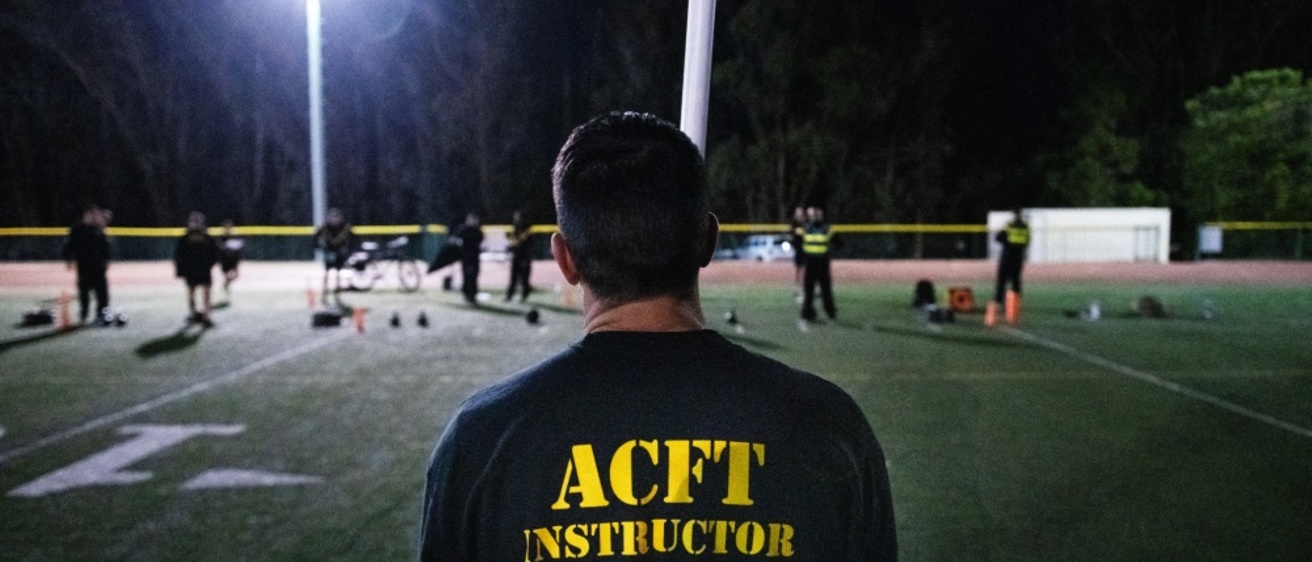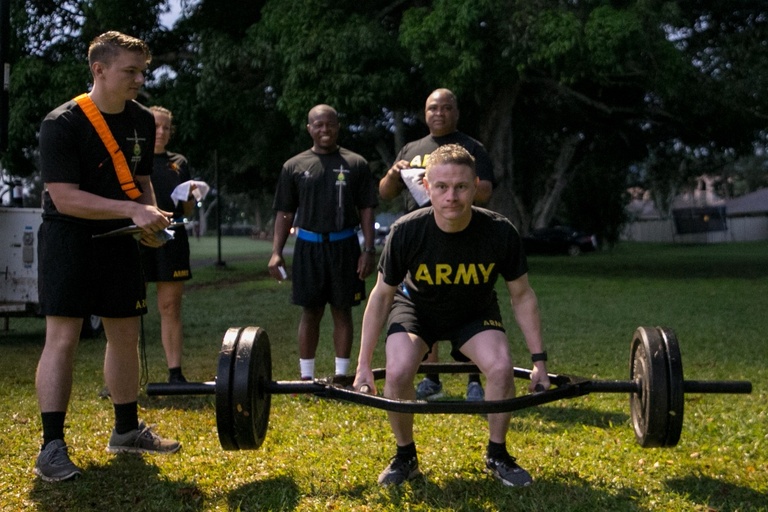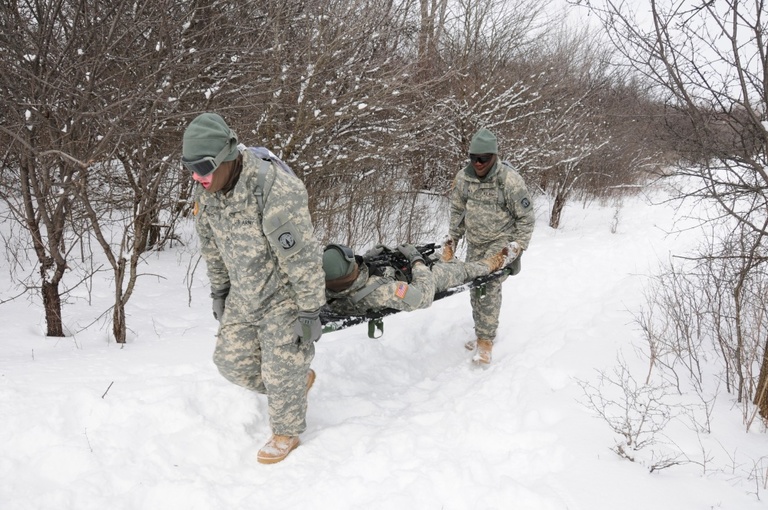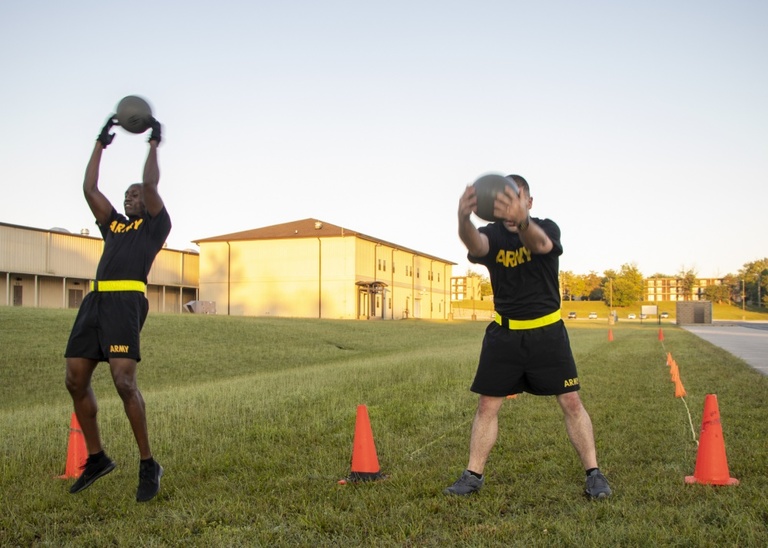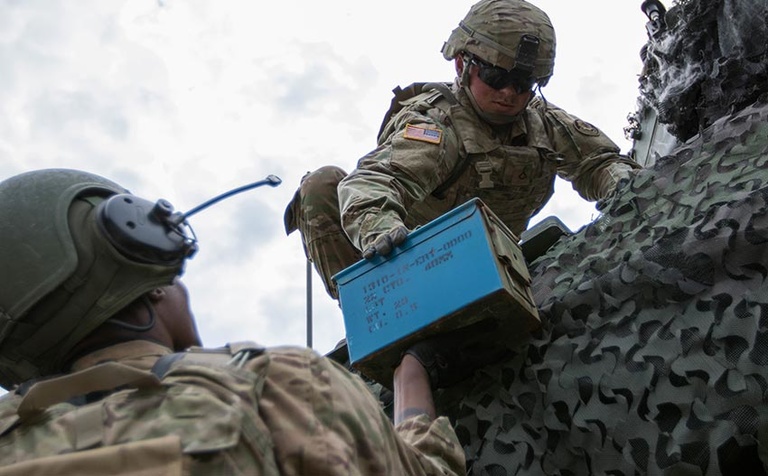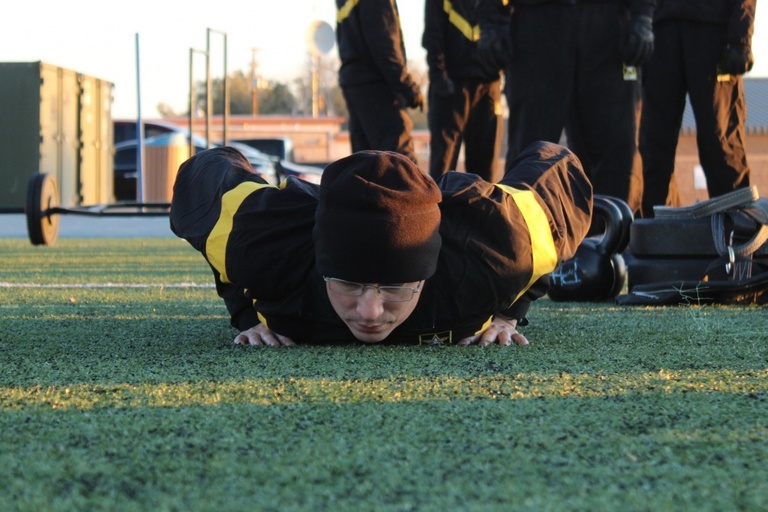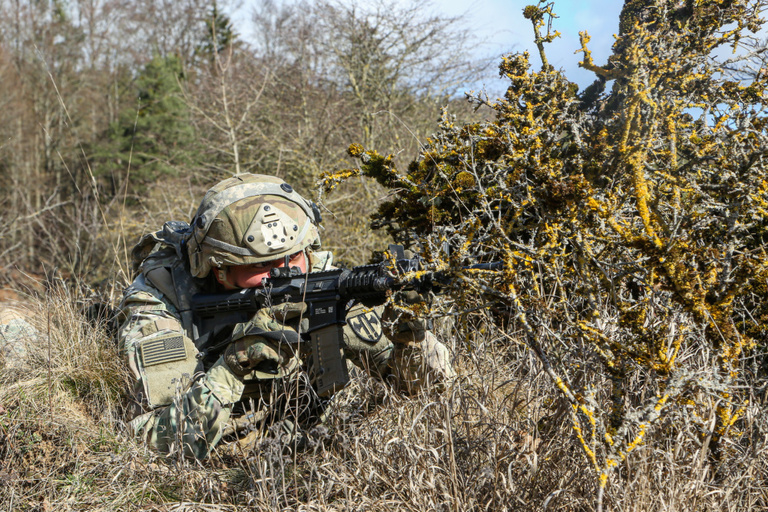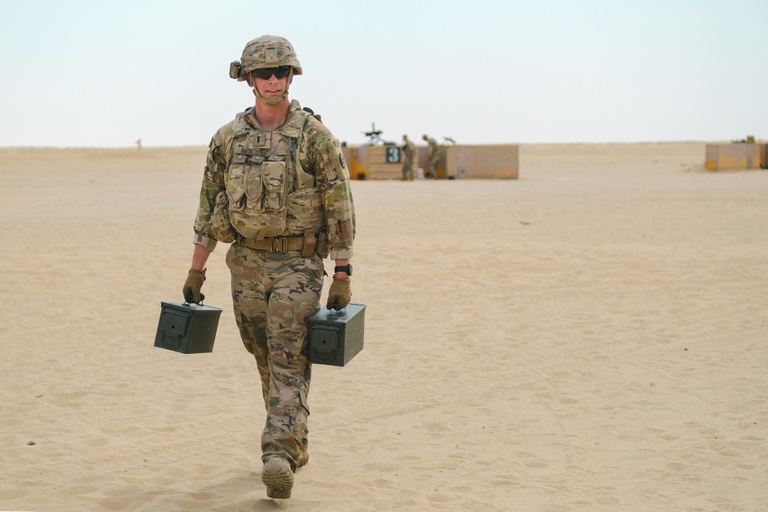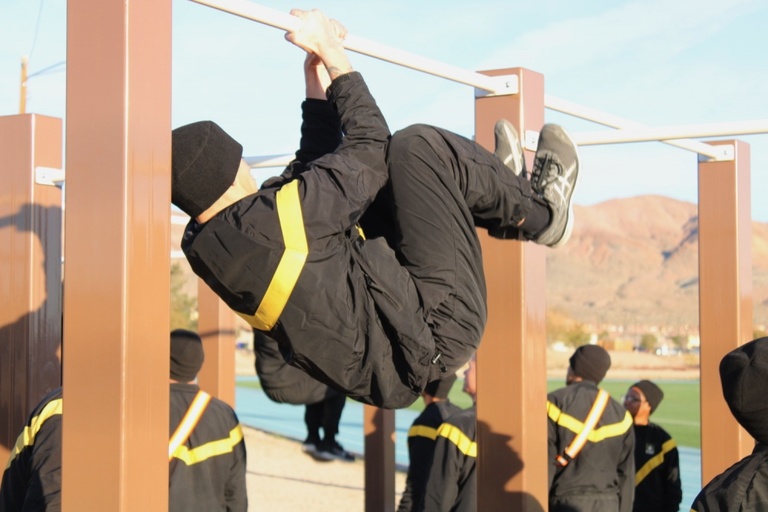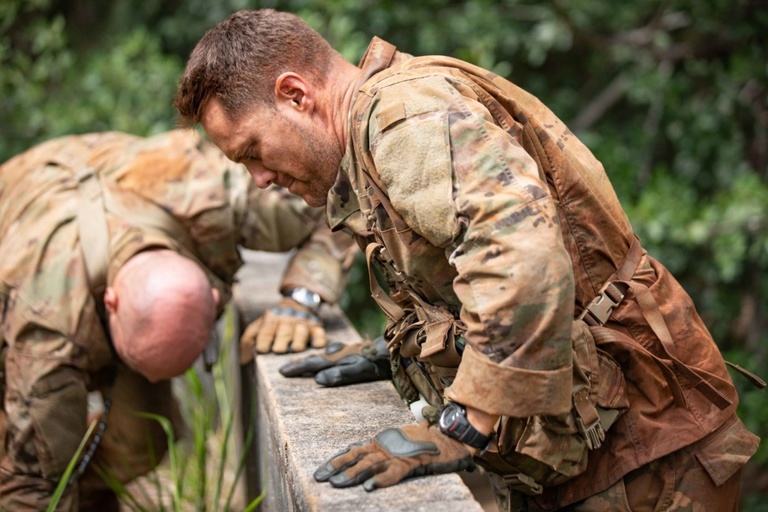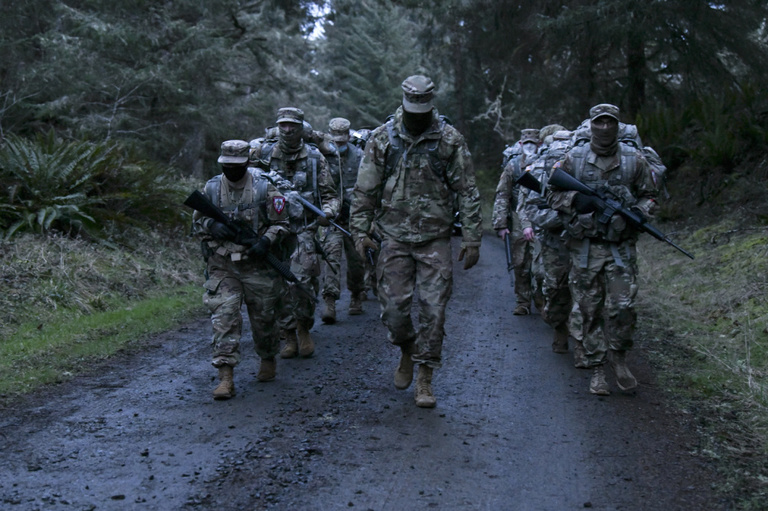Main navigation
Comprised of six events, the Army Combat Fitness Test aims to better connect fitness with combat readiness. Each exercise in the ACFT relates to potential scenarios in the battlefield, or common soldier tasks (CST).
Every year, Active Army and Active Guard Reserve Soldiers will take the test twice and Reserve and Guard Soldiers will take it once. With thousands of soldiers completing the ACFT every year, a large amount of data is produced for the U.S. Army to consider in determining best practices for training and combat preparation. Soldiers are scored up to 100 points on each event.
The University of Iowa Technology Institute has helped validate the correlation between the six events and CST. See how the six ACFT events – Deadlift, Power Throw, Hand Release Push-Ups, Sprint-Drag-Carry, Leg Tuck, and 2-mile run – translate to CST.
3 Repetition Maximum Deadlift (MDL)
Event: This event represents movements required to safely and effectively lift heavy loads from the ground. Participants use a 60 pound hex bar rather than an Olympic-style deadlift bar.
Fitness: The MDL event requires well-conditioned back and leg muscles, and tests participants' strength, balance, and flexibility.
Scoring: Lifts between 140 pounds and 340 pounds are scored 60 to 100 points respectively.
Applications to CST:
- Lifting and moving heavy loads from the ground (people or equipment).
- Extracting a casualty on a litter (stretcher).
Standing Power Throw
Event: The Standing Power Throw represents tasks requiring quick explosive movements to maneuver equipment.
Fitness: This event tests power, balance, and flexibility.
Scoring: Participants throw a 10-pound medicine ball over their head, scoring 60 to 100 points for throws between 4.5 meters and 12.5 meters.
Applications to CST:
- Throwing equipment onto or over an obstacle.
- Lifting or assisting soldiers climbing a wall.
- Jumping across and over obstacles.
- Man-to-man contact.
Hand Release Push-up
Event: The HRP is an upper body endurance test that represents repetitive and sustained pushing used in combat tasks. Participants lie in a push-up position with their body touching the ground, push-up and fully extend their elbows, and then return to the original position.
Fitness: This event tests soldiers chest, shoulder, and core strength.
Scoring: Participants are to complete as many hand-release push-ups as possible within two minutes. 10 push-ups score participants 60 points, with 60 repetitions scoring 100 points.
Applications to CST:
- Getting into and out of the prone position.
- Moving obstacles or disabled vehicles.
Sprint-Drag-Carry
Event: The Sprint-Drag-Carry is a test of strength, endurance, and anaerobic capacity, which are needed to accomplish high intensity combat tasks that last from a few seconds to several minutes.
Fitness: Focusing on endurance, muscular strength and agility, the Sprint-Drag-Carry event tests a multitude of participants physical abilities.
Scoring: Participants are to complete all three tasks in the quickest time possible, with three-minutes scoring 60 points and one minute thirty-three seconds scoring 100 points.
Applications to CST:
- Carrying ammunition.
- Reacting to direct and indirect fire.
- Extracting a casualty.
Leg Tuck
Event: Participants must bring their knees to their elbows from a vertical, "dead hang" position on a climbing bar. If participants are unable to complete the event, an alternate event is available: the Plank (PLK).
Fitness: Considered one of the most difficult events, the Leg Tuck assesses the strength of a soldier’s grip, arm, shoulder, and trunk muscles.
Scoring: Participants must complete as many leg tucks as possible while maintaining a relative vertical posture. One repetition scores 60 points, twenty repetitions scores 100 points. If completing the alternative assessment, 2:09 in plank position scores 60 points and 4:20 scores 100 points.
Applications to CST:
- Climbing over obstacles and walls.
- Rope Climbing.
Two-Mile Run
Event: The Two-Mile Run event measures aerobic endurance, required for conducting continuous operations and ground movements on foot.
Fitness: This event tests aerobic endurance, and endurance more generally since it is the last event of the fitness test.
Scoring: Participants are timed for score on a flat track or running surface. A twenty-one minute completion time nets 60 points, and a thirteen-and-a-half time nets 100 points.
Applications to CST:
- Ruck march.
- Dismounted movement.
